 Kerala, the land of mountains, rivers, lakes, waterfalls and backwaters, has numerous national parks and wildlife sanctuaries. The enchanting green forests with elephants, tigers, wild dogs, sambars, gaurs, leopards, as well as many exotic species of reptiles,land and water birds offers a wonderful sight to the tourists.Some of the reputed forest zones such as Silent Valley are located in Kerala. Kerala, the naturally green state in India, with a plethora of greens with thick undergrowths and verdant forests, a temperate climate and so many natural sources of water, provide the perfect habitat for the growth of wildlife. Naturally there are many wildlife sanctuaries in Kerala that have been developed to look after and preserve the wide variety of birds and animals in the wilderness of Kerala. The Kerala Wildlife sanctuaries are major tourist attractions where people from all over the world come to catch a glimpse of some rare species of animal or bird and some stunningly beautiful nature spots. There are treks that can be taken along with nature trails and nature walks along the green pastures of the sanctuaries. The visitors can also go on wildlife safaris, on jeeps or elephants, and watch the wild animals in their natural habitats in the interior of the wildlife sanctuaries in Kerala. There are a number of wildlife sanctuaries and bird sanctuaries in Kerala, which constitute a repertoire of natural wealth for the state |
Sunday, January 24, 2010
Kerala Wildlife
Neyyar
.jpg)
Neyyar wildlife sanctuary is the place to be for wildlife lovers and nature gazers. Nestled in the southeastern part of the As you walk through the thick tropical wet evergreen forest to the grassland patches, you will come across a spectacular array of flora and fauna. With the Kerala backwaters lying just beside, the Neyyar wildlife sanctuary offers you the rare opportunity to gaze at Indian Porcupines, Elephants, Nilgiri Tahrs, Barking Deer, Gaurs, Sloth Bears, Lion-tailed Macaques, Sambars, Malabar Squirrels, Tigers, Jungle Cats, Wild Boars and Nilgiri Langurs, to name a few. Rich in avian species and reptiles, you may also encounter Cobras, Vipers, Pythons, Rat Snakes, Flying Snakes and Lizards in the sanctuary. Boat rides Besides these, at the Neyyar wildlife sanctuary, as you venture into the thick forest under able guides, you may be lucky to spot exotic birds such as King Fishers, White-breasted Water Hen, Little Green Heron, Woodpeckers, Indian Cuckoos, Gray Jungle Fowl, Common Mynas, Indian Hill Mynas, Darters, Little Cormorants, Little Egrets and Brahminy Kites. On your tour to the Neyyar wildlife sanctuary, you can also enjoy the Crocodile Farm, Deer Farm and | ||
Parambikulam
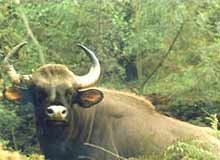 Parambikulam wildlife sanctuary reserves its own charm for the tourists. Covered with a thick growth of dense forest, it is a haven for wildlife and rare avian species. Ensconced between the Anamalai ranges of Tamil Nadu and the Nelliampathy ranges of Kerala, with several rivers flowing in the area, Parambikulam wildlife sanctuary is a paradise for wildlife lovers and nature gazers.Parambikulam wildlife sanctuary can be reached from the Coimbatore airport, which is about 55 km from the sanctuary. If you travel by train, the nearest railway station is Palakkad that is 125 kms from the sanctuary. Parambikulam wildlife sanctuary reserves its own charm for the tourists. Covered with a thick growth of dense forest, it is a haven for wildlife and rare avian species. Ensconced between the Anamalai ranges of Tamil Nadu and the Nelliampathy ranges of Kerala, with several rivers flowing in the area, Parambikulam wildlife sanctuary is a paradise for wildlife lovers and nature gazers.Parambikulam wildlife sanctuary can be reached from the Coimbatore airport, which is about 55 km from the sanctuary. If you travel by train, the nearest railway station is Palakkad that is 125 kms from the sanctuary.As you walk through the thick forests of bamboo strands, teak, rosewood and sandalwood, you will find the area is marshy, with scattered patches of grasslands.Parambikulam was once famous for its teak wood forest, but little remains of its past glory except the Kannimari teak tree, which is the largest in Asia. Reserve forest Besides the teak plantations at the Parambikulam wildlife sanctuary, as you venture into the thick forest under able guides, you may be lucky to spot sloth bears, sambhars, chitals, tigers, panthers, elephants and crocodiles. Cobras, kraits, vipers, macaques, darters, turtles, cormorants and black eagles are also found here. But the largest population of wildlife that graces the Parambikulam wildlife sanctuary is gaurs or bison. Though the Parambikulam wildlife sanctuary is open throughout the year, it is best to avoid the monsoons as during these months, from June to August, torrents of rain make the hillsides unstable. The forest department has suitable provisions for accommodation at the forest rest houses at Thoonakkadavu, Thellikkal and Elathode. You can avail of the tree house in the reserved forest area in Thoonakkadavu, which has to be booked in advance. The two watch towers - one at Anappadi, 8km from Thunakadavu, and another at Zungam, 5km from Thunakadavu, are ideal locations to spot the wildlife through powerful binoculars | ||
Aralam
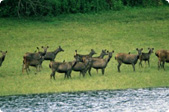 A delight to the nature lovers, the Aralam wildlifesanctuary in Kannur district is situated on the slopes of the Western Ghats of Kerala. It is the best combination of forest and mountains. The elevation gradually increases from 50 meters to 1145 meters. The highest peak over theAralam wildlife sanctuary that rises to a height of 1145 meters is known as Katti Betta. A large number of birds are attracted by the spotless greenery in the Aralam wildlife sanctuary. This place also attracts numerous grass eating animals. A delight to the nature lovers, the Aralam wildlifesanctuary in Kannur district is situated on the slopes of the Western Ghats of Kerala. It is the best combination of forest and mountains. The elevation gradually increases from 50 meters to 1145 meters. The highest peak over theAralam wildlife sanctuary that rises to a height of 1145 meters is known as Katti Betta. A large number of birds are attracted by the spotless greenery in the Aralam wildlife sanctuary. This place also attracts numerous grass eating animals.Established in the year 1986, the Aralam wildlife sanctuary has evolved a lot to become one a very popular wildlife sanctuary in Kerala. The majestic forests filled with trees and animals give a memorable experience of nature’s best blessings. It is a complete wildlife travel destination that is worth visiting. Flora and fauna The temperature of Aralam wildlife sanctuary varies from 21° C to 40°C. Aralam wildlife sanctuary receives an annual rainfall of about 3,000 mm. Aralam wildlifesanctuary receives the highest rainfall in the months that fall between June to August. A visit to the Aralam wildlife sanctuary is a pleasurable experience as it offers you a wonderful chance to enjoy your holidays amidst wilderness and wild animals. The sanctuary at Aralam gives you an opportunity to witness the habits and habitats ofwildlife in the jungles of Kerala. Aralam wildlife sanctuary houses various species of evergreen trees like Vellapine (Vateria indica), Mesua ferrea, Mechilus macrantha, Calophyllum elatum, Cullenia rosayroona, Mangifera indica, Toona cillata, Myristica , Euphorbia Longana, and Strobilanthes. The common trees in the semi evergreen areas are Cinnamomum Zeylanicum, Hopea parviflora, Largestroemia lanceolata, Xyliaxylocarpa, Mallotus, Philippinensis. The variety of animals and birds found in the Aralam wildlife sanctuary are different kinds of deer, boars, elephants, bison, leopards, jungle cats and various types of snakes and squirrels | ||
Peppara
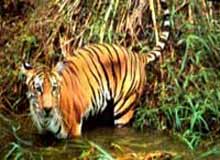 Located 50 kms north east of the capital city of Kerala,ie Thiruvananthapuram, the Peppara wildlife sanctuary is home to Tiger, Panther, Wild Dog, Lion Tailed Macaque, Elephant, Gaur, Sambhar, Barking Deer, Mouse Deer, Wild Boar, Nilgiri Langur, Malabar squirrel etc. The bird species seen here include water birds like Darter, Little Cormorant, Pied Kingfisher and Egret. Apart from these, numerous variety of snakes including the King Cobra and Python are frequently spotted in the park. The highlight of the wildlife sanctuary at Peppara is the 13 tribes of adivasis that still reside inside the park premises. Located 50 kms north east of the capital city of Kerala,ie Thiruvananthapuram, the Peppara wildlife sanctuary is home to Tiger, Panther, Wild Dog, Lion Tailed Macaque, Elephant, Gaur, Sambhar, Barking Deer, Mouse Deer, Wild Boar, Nilgiri Langur, Malabar squirrel etc. The bird species seen here include water birds like Darter, Little Cormorant, Pied Kingfisher and Egret. Apart from these, numerous variety of snakes including the King Cobra and Python are frequently spotted in the park. The highlight of the wildlife sanctuary at Peppara is the 13 tribes of adivasis that still reside inside the park premises.Constituting the catchment of the Peppara dam across the Karamana River, the area around was declared a wildlife sanctuary in 1983 because of ecological significance. A part of the Paruthippally range, Peppara wildlife sanctuary constitutes a part of the Palode reserve. It covers an area of 53 sq. kms. Semi-evergreen forest Though the best time to visit the Peppara wildlife sanctuary is from March to July and later in the year from September to November, if you are a wild life enthusiast no scorching sun in the summers or the heavy down pour in the monsoons are going to stop you from catching the prowling animals in your binoculars. To be more comfortable you should be carrying light clothes during the summers and a raincoat definitely in the monsoons. Exploring Peppara wildlife sanctuary in Kerala, you will find the forest is of stunted evergreen at a 1000m elevation at the southern hilltop while on the west coast the hilly slopes are semi-evergreen forest and the lower slopes of the hills have mixed deciduous forests. Trekking though the forests you will come across elephant, gaur, sambar, barking deer, mouse deer, wild boar, tiger, panther, wild dog, lion tailed macaque, Nilgiri langur and Malabar squirrel. Water birds like darter, little cormorant, pied king fisher and egrets are also present. Snakes including the king cobra and python are found in this sanctuary. A variety of moth and butterflies is also found | ||
Thattekkad
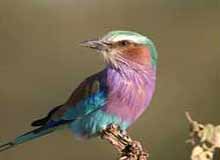 Occupying an area of 25 sq km, the Thattekad bird sanctuary is located in the Ernakulam district of Kerala. Designed by a famous ornithologist, Dr Salim Ali, the Thattekad bird sanctuary is home to a large number of bird species like Bee-eater, Sunbird, Shrike, Black winged Kite, and the Night Heron. There are also around 28 species of animals and nine varieties of reptiles.Plenty of insect life also abound.Located near Kothamangalam of Ernakulam district on the northern bank of Periyar River, Thattekad bird sanctuary can be reached from Kochi airport located about 71 km from the sanctuary. If you travel by train, the nearest railway station is Aluva that is 48 kms away. Occupying an area of 25 sq km, the Thattekad bird sanctuary is located in the Ernakulam district of Kerala. Designed by a famous ornithologist, Dr Salim Ali, the Thattekad bird sanctuary is home to a large number of bird species like Bee-eater, Sunbird, Shrike, Black winged Kite, and the Night Heron. There are also around 28 species of animals and nine varieties of reptiles.Plenty of insect life also abound.Located near Kothamangalam of Ernakulam district on the northern bank of Periyar River, Thattekad bird sanctuary can be reached from Kochi airport located about 71 km from the sanctuary. If you travel by train, the nearest railway station is Aluva that is 48 kms away.Avian variety Also called The Salim Ali Bird Sanctuary, Thattekad bird sanctuary was described by Dr. Ali as the richest bird habitat in peninsular India comparable only with eastern Himalayas. The bird sanctuary is rich in teak and mahogany plantation too. Exploring the lowland forests of Kerala you will come across a diverse avian species. Some of the rare birds in the sanctuary at Thattekkad are Collocalia unicolor or Indian Swiftlet, Ocyceros griseus or Malabar Grey-Hornbill, Spizaetus cirrhatus or Changeable Hawk-Eagle, Anhinga melanogaster or Oriental Darter and Ardea cinerea or Grey Heron. Snipes, Celeus brachyurus or Rufous Woodpecker, Batrachostomus moniliger or Ceylon Frogmouth, Eurostopodus macrotis or Great Eared-Nightjar and Bubo bubo or Eurasian Eagle-Owl have been also spotted by avid birdwatchers. For Accommodation you can avail the three storied watch tower in the Thattekad bird sanctuary which has two beds, a toilet and a kitchen. Though there is no electricity in the forest watch tower there are few solar powered lamps. A forest department inspection bungalow called Hornbill is located near the sanctuary entrance | ||
Shendurney
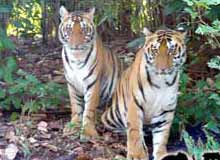 Imagine the thrill of encountering a herd of barking deer darting past you or watching the leisurely gait of some elephants. If you are the adventurous type waiting to spot Vipers and Pythons then you should be packing your rucksack to Shendurney wildlife sanctuary. Located 70 kms from Kollam, Kerala, and situated on the banks ofShendurney river, the wildlife sanctuary can be approached from the Kollam-Shencotta Road. Imagine the thrill of encountering a herd of barking deer darting past you or watching the leisurely gait of some elephants. If you are the adventurous type waiting to spot Vipers and Pythons then you should be packing your rucksack to Shendurney wildlife sanctuary. Located 70 kms from Kollam, Kerala, and situated on the banks ofShendurney river, the wildlife sanctuary can be approached from the Kollam-Shencotta Road.Though the best time to visit the Shendurney wildlife sanctuary is from March to July and later in the year from September to November, if you are a wild life enthusiast, no scorching sun in the summers or the heavy down pour in the monsoons is going to stop you from catching the prowling animals in your binoculars. To be more comfortable you should be carrying light clothes during the summers and a raincoat definitely in the monsoons. Rocks and ravines The wildlife sanctuary at Shendurney is a green valley of splendid forests, situated on the banks of the Shendurney River. Steep and rugged peaks surround the sanctuary, which is dotted by several breathtaking ravines. Gaurs and Elephants which are seen in plenty are the main attractions of Shendurney wildlife sanctuary.On the northern side of the wildlife sanctuary is Palaruvi, a beautiful picnic spot. In the tropical evergreen and mixed deciduous forests at Shendurney, are found a variety of animals.The wildlifepopulation at Shendurney sanctuary is rich in flora and fauna and includes animals such as Elephants, Gaurs, Barking Deer, Cobra, Viper, Python and the Indian Porcupine. You can reach the Shendurney wildlife sanctuary in Kerala by travelling to Thiruvananthapuram which is at a distance of 140 kms from the sanctuary and 70 kms from Kollam railway station | ||
Idukki
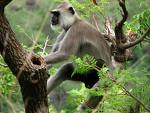 The Idukki wildlife sanctuary, Kerala is covered with forests of teak, marshes, bamboo and other grasslands. This sanctuary is considered to be one of the richest and most extensive forest belts in peninsular India. The Idukki wildlife sanctuary is spread over an area of 77 square kilometers. The Idukki wildlife sanctuary stretches over the taluks of Udumpanchola and Thodupuzha in the Idukki district, in Kerala. The Idukki wildlife sanctuary, Kerala is covered with forests of teak, marshes, bamboo and other grasslands. This sanctuary is considered to be one of the richest and most extensive forest belts in peninsular India. The Idukki wildlife sanctuary is spread over an area of 77 square kilometers. The Idukki wildlife sanctuary stretches over the taluks of Udumpanchola and Thodupuzha in the Idukki district, in Kerala.The Idukki wildlife sanctuary came into existence in the year 1976. The perfect time to visit the Idukki wildlife sanctuary is during the months of December to April. Elephants are seen in this wildlife park mainly during the dry season. The Idukki wildlife sanctuary has a rich bio diversity, and rich avifauna. This wildlife park is situated very close to theIdukki arch dam. Heritage site If you are on a wildlife tour to the Idukki wildlife sanctuary, you can get an opportunity to see various species of snakes such as the cobra, krait and the viper. This wildlifesanctuary also houses a number of birds such as woodpeckers, black bulbuls, jungle fowls, laughing thrushes, mynas, kingfishers and pea fowls. Like any other wildlifesanctuary in Kerala this wildlife park at Idukki also presents a perfect spot for a wonderful weekend getaway. Nearby Idukki wildlife sanctuary is located the Chinnar wildlife sanctuary, situated 18 km north of Marayoor in the Marayoor and Kanthalloor panchayats of Devikulam taluk in Idukki district of Kerala, south India. It is under the jurisdiction of and contiguous with Eravikulam National Park to the south. Indira Gandhi wildlife sanctuary is to the northwest and Kodaikanal wildlife sanctuary is to the east. It is one of twelve wildlife sanctuaries in Kerala.The Western ghats, Anamalai sub-cluster, including all of Chinnar wildlife sanctuary, is under consideration by the UNESCO World Heritage Committee for selection as a World Heritage Site | ||
Kumarakom
.jpg) The Kumarakom bird sanctuary is located at a distance of 16 km from Kottayam town, in the village of Kumarakom. Covering an area of 14 acres, the Kumarakom bird sanctuary is a delight for the lovers of birds. It occupies the area on the banks of the Vembanad lake and offers its visitors a glimpse into the Keralas natural beauty. The sanctuary is actually a paradise for those who wish to escape from the maddening rush of the city life and be with nature as well as themselves for a while. The Kumarakom bird sanctuary is located at a distance of 16 km from Kottayam town, in the village of Kumarakom. Covering an area of 14 acres, the Kumarakom bird sanctuary is a delight for the lovers of birds. It occupies the area on the banks of the Vembanad lake and offers its visitors a glimpse into the Keralas natural beauty. The sanctuary is actually a paradise for those who wish to escape from the maddening rush of the city life and be with nature as well as themselves for a while.The best time to visit the park is between the months of June and August. However if migratory birds are high on the list on a visit, then November to March is just perfect. It is during this period that the migratory birds flock in huge numbers to reside in the park for a while.The landscape of Kumarakom bird sanctuary is replete with mangrove forests, green paddy fields and coconut groves. Blooming lilies enhance the beauty of the park and attract a number of visitors. Birds, the prime attraction of Kumarakom bird sanctuary, are large in number. Fluttering their wings and singing their mellifluous tunes, they keep the environment of the park alive. For tourists to the park, it is heartening to see so many species of birds together in a single trip. The local population of the birds in the bird sanctuary atKumarakom include Waterfowl, Cuckoo, Owls, Egrets, Herons, Water Ducks, Parrots, Teal, Larks, Flycatchers and Wood Beetle. The Siberian Cranes are widely famous amongst the migratory birds in the sanctuary. Bird watching Enjoying a houseboat and motorboat cruise at Kumarakom is the most popular way to sight the bird population of the sanctuary. On board the houseboats and motorboats, it becomes possible to sight a number of birds without actually disturbing them. What makes these cruises all the more special is the kind of tranquility felt while sailing through the serene waters of the Vembanad Lake. The Island of Pathiramanal ( meaning sands of night) which attracts a large number of migratory birds is also easily accessible from the boats. The story of the island goes that when a Brahmin entered into the water to perform his evening ablution, it made way and gave rise to land from below. Another option to spot the bird species of Kumarakom sanctuary is to set out on foot on the one and half km long walking track. Chances are that a large number of Herons, Darters, Storks, Teals etc will come across and provide an easy glimpse for the tourists. Cameras are allowed and capturing birds in them has become hugely popular | ||
Wayanad
.jpg) The Wayanad wildlife sanctuary is located 18 km east of Sultan Bathery. It actually spreads into two regions of Kerala - Cannanore in the north and Calicut in the south. An intrinsic part of the Nilgiri Biosphere, the Wayanad wildlife sanctuary of Kerala is joined to two other wildlife parks - Nagarhole and Bandipur of Karnataka on the northeast and Mudumalai of Tamil Nadu on the southeast. The sanctuary was formed in the year 1973 and was brought under the Project Elephant in the year 1991-92.. Occupying an area of 345 sq km, the Waynad wildlife sanctuary happens to be the second largest one in the state of Kerala. The Wayanad wildlife sanctuary is located 18 km east of Sultan Bathery. It actually spreads into two regions of Kerala - Cannanore in the north and Calicut in the south. An intrinsic part of the Nilgiri Biosphere, the Wayanad wildlife sanctuary of Kerala is joined to two other wildlife parks - Nagarhole and Bandipur of Karnataka on the northeast and Mudumalai of Tamil Nadu on the southeast. The sanctuary was formed in the year 1973 and was brought under the Project Elephant in the year 1991-92.. Occupying an area of 345 sq km, the Waynad wildlife sanctuary happens to be the second largest one in the state of Kerala.The sanctuary is separated into two disconnected parts known as the Upper Wayanad wildlife sanctuary (Tholpetty) in the north and Lower Wayanad wildlife sanctuary (Muthanga) in the south. The area in between the two parts was orginally a forest region, though it is now occupied by plantations. Till date, a number of dispersed human settlements can be found in the sanctuary area.The term Wayanad literally means land of swamps. A visit to the sanctuary offers tourists a chance to witness the efforts made by the management to conserve the biological reserve of the park. The scenic beauty and the variety of flora and fauna also keep the visitors busy and entertained. Undulating landscape The undulating landscape of the Wayanad wildlife sanctuary is covered with moist deciduous teak forests and semi evergreen tree pastures. The floral variety of the park range from Teak, Bamboo, Maruthu, Karimarithi, Rosewood, Venteak, Vengal, Chadachi, Mazukanjirarn (deciduous type) to Veteria indica, Lagerstroemia, Lanceolta, Terminalia Paniculata (semi evergreen type). Among animals, the Elephant occupies the prominent position though there are a decent number of Tigers in the park as well. Other wild animals that can be sighted here include Panthers, Jungle Cats, Civet Cats, Monkeys, Wild Dogs, Bisons, Deer and Bears.The reptile population is also fairly good with a number of snakes species sighted here. Monitor Lizards are quiet common in this park.Peacock, Babbler, Cuckoo, Owl, Woodpecker and Jungle Fowl are a few of the numerous birds that are seen flying in the park. It is a pleasure to watch as these birds go about their usual tasks collecting food for their young ones and themselves. Tourists can explore the flora and fauna of Wayanad wildlife sanctuary on board a jeep. This is an excellent option to remain safe as well as increase the chances of animal sighting. However prior permission is required to be taken from the Forest Department for this purpose. You also need to take along a guide provided by the Forest Department compulsorily. It is to be noted here that the elephants of Wayanad wildlifesanctuary are more violent than their brethren in other sanctuaries of Kerala. Hence, proper precaution needs to be undertaken during your jeep safari trip. The best time to visit the wildlifeWayanad is between the months of June to October | ||
Periyar
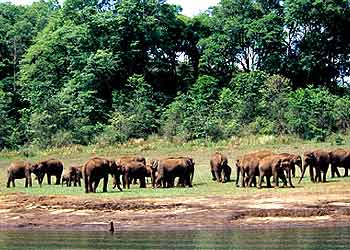 Periyar wildlife sanctuary is located in Kumily, in Idukki district of Kerala. Set amidst the mountains of the Western Ghats at the border of Tamil Nadu, the Periyar wildlife sanctuary covers an area of 777 sq km out of which 360 sq km forms the core area. The park is one of the most renowned and famous sanctuaries in entire south India and can also be termed as the pride of Kerala. The history of the park states that as early as in 1895, a dam by the name of the Mullaperiyar was constructed across the Periyar River giving birth to the Periyar Lake. Periyar wildlife sanctuary is located in Kumily, in Idukki district of Kerala. Set amidst the mountains of the Western Ghats at the border of Tamil Nadu, the Periyar wildlife sanctuary covers an area of 777 sq km out of which 360 sq km forms the core area. The park is one of the most renowned and famous sanctuaries in entire south India and can also be termed as the pride of Kerala. The history of the park states that as early as in 1895, a dam by the name of the Mullaperiyar was constructed across the Periyar River giving birth to the Periyar Lake.In 1934, the Maharaja of Travancore appointed S.C.H. Robinson as the first game warden and it was his recommendation that converted the area around the lake into a sanctuary by the name of Nellikkampetty sanctuary. In the year 1966, the sanctuary was consolidated with the forest department and the Periyarwildlife sanctuary was created. The sanctuary was finally declared a Tiger Reserve in the year 1978, a few years after Project Tiger was actually initiated. Also, in 1991, the park was brought under the Project Elephant. This lake today covers an area of 26 sq km and is a major source of water for the resident animals and birds. Moreover, the beauty of the lake is also soothing for visitors. The park was earlier also known by the name of Thekkady wildlife sanctuary. The best time to visit the Periyar wildlife sanctuary is between the months of September to June. During the period from February and May sighting of animals becomes easier as the waterholes inside the forest areas dry up forcing the animals to come upto the lake to quench their thirst and wet their bodies. Thus animal sighting is enhanced between these months. Evergreen rain forest Around three fourth of the wildlife sanctuary area is covered with evergreen and semi evergreen rain forests while a part of the remaining area is covered by damp leaves forest Eukalyptus plantation and grassland. The rest of the area is covered by PeriyarRiver and Pamba River. The floral attractions of the park are approximately 2000 species of flowering plants, 171 grass species and 143 species of orchids. The tall trees of the forest rise upto a height of 130 to 140 feet. Approximately 62 species of animals await to welcome visitors on their trip to thePeriyar wildlife Periyar wildlife sanctuary - around 1000. The most ferocious of these, undoubtedly is the Tiger. Many tourists visit Periyar just in order to get a glimpse of the Tiger, that according to estimates, number between 35-40. However, there is still a larger number of tourists who come here because of the Indian Elephants. The huge mammal is found in pretty large numbers in Periyar Sanctuary - around 1000. Other animals that manage to make their presence felt quite decently amidst these two are Leopards, Otters, Nilgiri Langurs, Common Langurs, Bonnet Macaques, Lion Tailed Macaques, Malabar Squirrels, Wild Boars, Sambar, Barking Deer, Mouse Deer, Nilgiri Tahr, Dhole, porcupines, Gaur and Sloth Bears. The reptile population of the park at Periyar wildlife sanctuary is also commendable with around 45 species found. Out of these, a majority (30) of them are snakes. The rest of them comprise of 2 turtle species and 13 lizard species. Frequent sighting of King Cobras and Python, two extremely poisonous snakes is also an attraction for the visitors to the park. As for the birds in the park, they include around 180 species. Prominent among these are Darters, Cormorants, Kingfishers, the great Malabar Hornbill and racket-tailed Drongoes. Tourists interested in spotting a large number of birds need to carry along their binoculars. Periyar wildlife sanctuary also offers enjoyable opportunities to view its exotic fauna through boating, trekking&camping,bamboo rafting, elephant safaris, walking trips and other facilities arranged by the Forest Department | ||
Thiruvallam
 Thiruvananthapuram, previously known as Trivandrum, is the capital of Kerala, India. This beautiful city is located near golden beaches and serene backwaters and has several historic temples and museums, making it a great place worth a visit by the travelers. Thiruvananthapuram, previously known as Trivandrum, is the capital of Kerala, India. This beautiful city is located near golden beaches and serene backwaters and has several historic temples and museums, making it a great place worth a visit by the travelers.Some of the modern attractions of Thiruvananthapuram include the Kanakakunnu Palace. The residence of the erstwhile rulers of Travancore, Kerala, the palace is now a venue for cultural events. The Napier Museum, the Natural History museum and the Sri Chithira Art Gallery are all worth visiting in Thiruvananthapuram. Thiruvananthapuram is near the Thiruvallam backwaters and the beautiful Kovalam Beach. Other tourist destinations in Kerala that are easily accessible from Thiruvananthapuram are Ponmudi, a picturesque hill station, Varkkala, a scenic beach and if you travel around 90 Km to Tamil Nadu, you reach Kanyakumari, the southern most point of India. The southernmost district of the state, Thiruvanathapuram is bounded by the wooded highlands of the Western Ghats on the east and the north east , and the Arabian sea on the west.A long shoreline with secluded internationally renowned beaches, historic monuments, backwater stretches and a rich cultural heritage, provide this district some of the most enchanting picnic spots. The main backwater areas of Thiruvananthapuram are Thiruvallam, Veli Tourist Village, and Akkulam Boat Club. The capital city of the kaleidoscopic Kerala, Thiruvananthapuram is a major tourist backwater destination. Thiruvananthapuram is also a major centre for tourism, politics and industry. The soothing shoreline, beautiful beaches and the backwater stretches make Thiruvananthapuram one of the most frequently visited backwater holiday destinations for the tourists in Kerala.The heritage buildings and historical places of interest offer variety and scope for exploration to the tourists.This city is especially attractive during the festivities of the harvest season of Onam. Thiruvananthapuram is known for its architectural planning,its greenery and its moderate climate.The stunningly beautiful and serene stretch of the Thiruvallam backwaters is temptingly close to Thiruvananthapuram. The backwater destination of Thiruvallam makes a great one-day tour. The renowned canoe rides make Thiruvallam popular with the tourists. You may even enjoy the water sports in the lagoon and the move to the beach from the village using the floating bridge in the waterfront park. The short village cruises using the country boats are perfectly pleasant ways to enjoy the backwaters of Thiruvallam. | ||
Kumarakom
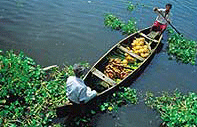 Kumarakom in Kerala is a beautiful backwater destination. Located on the picturesque Vembanad Lake, Kumarakom has to be seen to be believed. Kumarakom consists of a cluster of islands which have been converted into a number of tourist resorts. The place is very popular with the discerning luxury tourist. Kumarakom in Kerala is a beautiful backwater destination. Located on the picturesque Vembanad Lake, Kumarakom has to be seen to be believed. Kumarakom consists of a cluster of islands which have been converted into a number of tourist resorts. The place is very popular with the discerning luxury tourist.Kumarakom is enthrallingly beautiful. The blue backwaters and the surface of Vembanad Lake reflect the azure sky. The amazing shades of green of the vegetation that include mangroves, coconut palms, and paddy fields cover the verdant countryside. Channels and waterways wind their way through this green paradise. Water lillies and lotuses bloom in the water and birds from the bird sanctuary on Vembanad Lake call as they fly across the clear tropical sky. Kumarakom is an idyllic holiday destination for visitors. While in Kumarakom you can enjoy the attractions of your tourist resort, have an ayurvedic massage, try fishing or bird watching and have a totally relaxing holiday.The birds you can see at the Vembanad Sanctuary in Kumarakom include terns, gulls, herons, lapwings, kingfishers, stilts and Brahminy Kites. If youre a nature lover youre sure to be enchanted by the natural beauty of Kumarakom. Kumarakom is located 15 Km from Kottayam and about 75 Km from Cochin, which is the nearest airport. Kumarakom is accessible by road and rail till Kottayam. Taking the boat cruise to Kumarakom is the ideal way to travel to Kumarakom. Enjoy the beautiful scenery while lazing on a houseboat as you drift along the serene backwaters of Kumarakom… a cool, romantic and heavenly experience | ||
Kuttanad
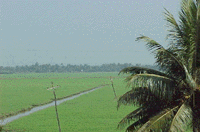 Kuttanad is a favorite Kerala backwater destination and is ideal for leisurely cruising. Kuttanad is also known as the "Rice Bowl of Kerala" and is characterized by its green landscape. Travelling to Kuttanad is a must for visitors who don’t want to miss the scenic beauty of this verdant backwater destination in Kerala. Kuttanad is a favorite Kerala backwater destination and is ideal for leisurely cruising. Kuttanad is also known as the "Rice Bowl of Kerala" and is characterized by its green landscape. Travelling to Kuttanad is a must for visitors who don’t want to miss the scenic beauty of this verdant backwater destination in Kerala.Kuttanad is crisscrossed with waterways that run alongside fields of cassava, banana and yam, as well as emerald green fields of paddy. A unique feature of Kuttanad is that many of these fields where farming is done are below sea level. The fields are surrounded by earthen bunds and crops are grown on the low-lying ground. This is similar to the polder regions of the Netherlands where land is reclaimed from the sea and crops are grown. You have to see the amazing below-sea-level fields of Kuttanad to get an actual feel of the place. Kuttanad is a backwater paradise and an ideal destination for a backwater cruise in Kerala. Its innumerable streams, channels, waterways and lakes make it possible to drift along in a houseboat and enjoy the scenic view of the Kerala countryside to take back home a memorable holiday experience. Your houseboat will be trailed by flocks of ducks; coir workers processing coir look up from their tasks and wave as you pass by; otters and water birds can be seen on the edges of the waterways, and the sound of rippling water is a soothing lullaby as you sail along on a houseboat through the backwaters of Kuttanad | ||
Kottayam
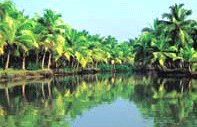 Kottayam is a beautiful Kerala backwater destination. This historic town is also famous for many churches and temples and for its role in the history of Kerala. The beautiful Vembanad Lake and its associated backwaters border Kottayam district on the West. There are hill ranges to the East and the Ernakulam district to the North. Kottayam is located in an area of great natural beauty and youre sure to be enchanted by the scenery around Kottayam while cruising in the backwaters here. Kottayam is a beautiful Kerala backwater destination. This historic town is also famous for many churches and temples and for its role in the history of Kerala. The beautiful Vembanad Lake and its associated backwaters border Kottayam district on the West. There are hill ranges to the East and the Ernakulam district to the North. Kottayam is located in an area of great natural beauty and youre sure to be enchanted by the scenery around Kottayam while cruising in the backwaters here.The name Kottayam is derived from Kotta and Akam which means the inside of a fort. Kottayam has a long history. The local rulers of Munjanad and Thekkumkur used Kottayam as their headquarters. Maharaja Marthanda Varma of Travancore defeated the local rulers and annexed Kottayam. With its fertile fields and transport links through the backwaters, Kottayam was a lucrative prize. You can see the ruins of the old palace and fort of the local rulers of Kottayam while cruising in the backwaters. Kottayam is an important center of Christianity in Kerala. There are many famous churches in Kottayam including the St Marys church and the St Josephs monastery. Some of the historic temples in Kottayam are the Ettumanoor Shiva Temple known for its mral paintings and sculptures and the Thirunakkara Mahadeva temple. Kottayam was the first town in Kerala to achieve 100% literacy among the adult population. Because of the many rubber plantations in Kottayam and the beautiful Vembanad Lake, Kottayam is known as the "Land of Letters, Latex and Lakes. | ||
Kasaragod
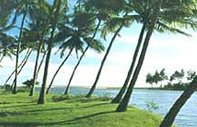 The entire state of Kerala is blessed by nature with plenty of rivers, lakes, ponds, lagoons, and backwater stretches.The waterways of Kerala especially Chandragiri in Kasaragod play a main role in the economy of the state,and they link remote villages and islands with the main land. The water ways provide a cheap and economical mode of transport. The entire state of Kerala is blessed by nature with plenty of rivers, lakes, ponds, lagoons, and backwater stretches.The waterways of Kerala especially Chandragiri in Kasaragod play a main role in the economy of the state,and they link remote villages and islands with the main land. The water ways provide a cheap and economical mode of transport.The northernmost district of Kerala, Kasaragod is situated on the sea coast bordered by hilly Kodagu and Mangalore districts of Karnataka on the east and north.Fishing is a prime source of livelihood along with the coir and handloom industries. With its unique natural and cultural attractions , Kasaragod is known as the land of gods, forts, rivers, hills and beautiful beaches.The Bekal fort, which stands on a 35 acre headland that runs into the Arabian sea , is the largest and the best preserved fort in the State. Situated 4 kms southeast from Kasaragod town on the Chandragiri river,the place Chandragiri is known for its large 17th century fort built by Sivappa Naik of Bedanore. The Chandragiri fort, one among a chain of forts built by the same ruler, offers a breathtaking view of the river and the Arabian sea . It is a vantage point to watch the sunset. Boat trips and houseboat cruises to the nearby islands and palm groves are available from the Chandragiri bridge boarding point.The Chandragiri cruises offer a delectable experience to the visitors especially during the monsoon season. Chandragiri is situated 4 Km to the Southeast of Kasaragod town. Backwater cruises in and around Chandragiri are a pleasant experience. As you arrive at Chandragiri you will see the historic Chandragiri Fort, which was built in the 17th century. The fort offers excellent viewpoints from where you can see spectacular sunsets over the sea near Kasaragod, | ||
Kottayam
 Bordered by the lofty Western Ghats on the east, the Vembanad lake and the paddy fields of Kuttanad on the west, Kottayam is a land of unique characterestics. Panaromic backwater stretches, lush paddy fields, highlands, extensive rubber plantations and the total literacy level achieved by the people have given this district the title: the land of letters, latex and lakes. Backwater Destination A voyage towards the north of Alappuzha, about 10 Kms from Kottayam, takes you to the rich green, sleepy little village of Kumarakom on the Vembanad lake. An enchanting picnic spot and a fast developing backwater tourism destination, Kumarakom provides boating , fishing and sight-seeing experiences that are truly exhilarating. An exclusive attraction of this much sought after backwater resort is the Kumarakom bird sanctuary. The Kumarakom bird sanctuary is an orthithologists paradise and a favourite haunt of migratory birds like the Siberian stork, egret, darter, heron and teal. A cruise along the Vembanad lake is the best way to view the bird life | ||
Kollam
 Located 71 Kms to the north of Thiruvananthapuram, Kollam is another coastal district of Kerala famous for its houseboat cruises.The district which is the centre of the countrys cashew trading and processing industry also has some interesting historic remnants and a number of temples built in traditional ornate architechural style. Boat building yard One of the oldest ports on the Malabar coast , the houseboat destination of Kollam was once the port of international spice trade . 30% of this historic town is covered by the renowned Ashtamudi lake, making Kollam the gateway to the magnificient backwaters of Kerala that can be enjoyed through the houseboat ride. The eight hour trip between Kollam and Alappuzha is the longest backwater houseboat cruise in Kerala.Alumkadavu, situated 23 kms from Kollam town,is halfway on the route to Alappuzha from Kollam. The quiet little backwater village in Karunagapally town is famous for its houseboat building yard. It is here that the gigantic kettuvallam(traditional cargo boats of rural Kerala)or houseboats were built. Today the kettuvallams which were long replaced by modern means of transport, have been converted into full fledged houseboats | ||
Subscribe to:
Comments (Atom)